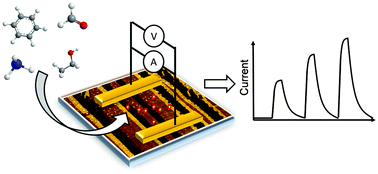Electrical gas sensors based on structured organic ultra-thin films and nanocrystals on solid state substrates
Abstract
Gas sensors, as useful tools to detect specific gas species such as toxic and explosive gases or volatile organic compounds, are the key components for environmental monitoring, fruit maturity and food safety monitoring, health care, and so on. The present commercial products based on porous metal oxide materials still face problems, such as high temperature operation and low level of selectivity. Thin films or nanostructures of organic materials with thickness or grain size down to nanometer scale represent promising candidates for gas sensing due to their potential for achieving high selectivity, portability and low cost. However, there are still challenges related to their stability, reproducibility and response/recovery speed despite the efforts in materials design, morphology control or device configuration, all of which have been expended during the last few decades. In this review, we summarize the progress of recent research on gas sensors based on organic ultra-thin films and nanostructures. We specifically discuss the effect of microstructure in the active layer on the sensing performance and mechanism.


 Please wait while we load your content...
Please wait while we load your content...